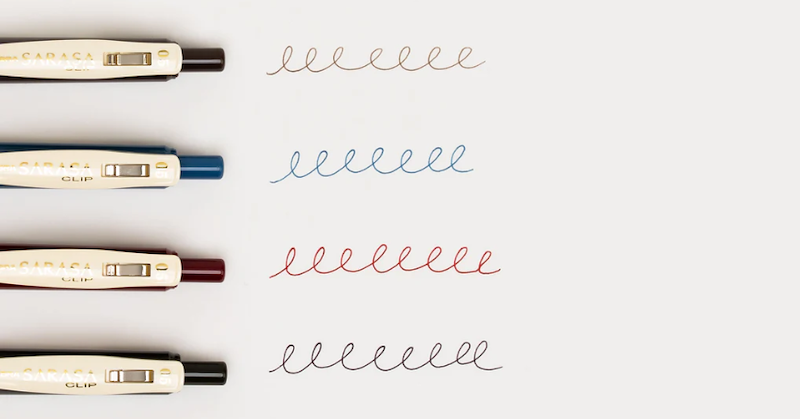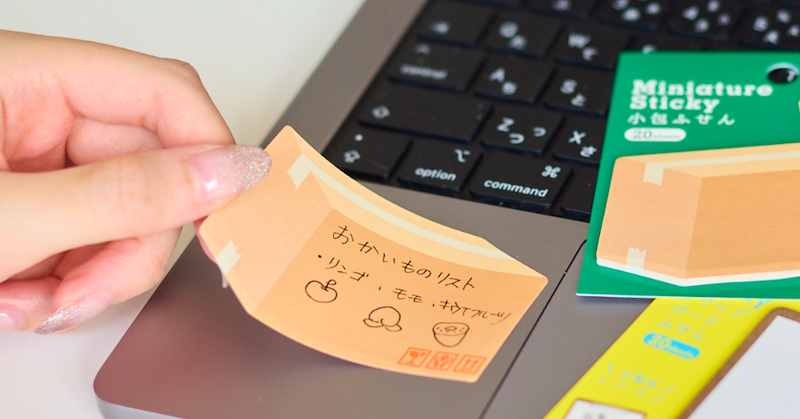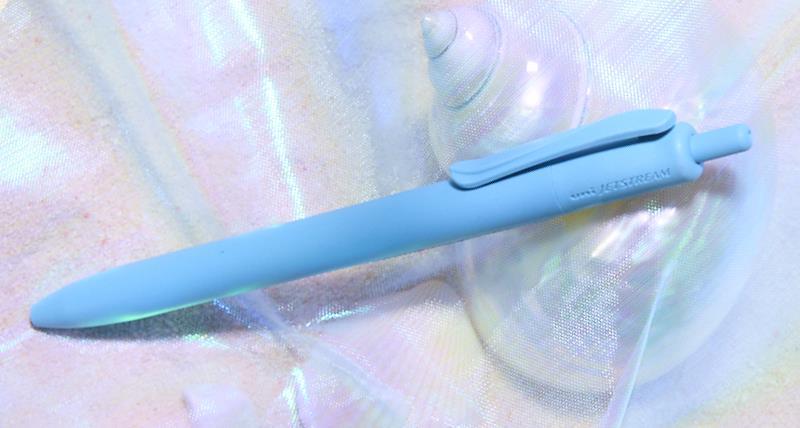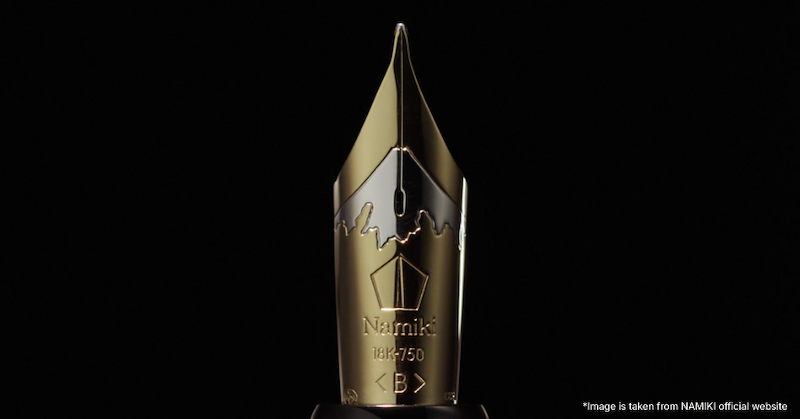
Why are Namiki Pens so expensive?
Ever wondered why Namiki pens come with a price tag that makes your wallet wince? It's not just a pen; it's a luxurious writing instrument that serves as the holy grail for many pen lovers. You're not just buying a pen; you're joining an exclusive club of luxury pen owners. Sure, they cost from $800 - $16,000 per pen, but even though many people ask the question, why are Namiki pens so expensive? They still sell out fast, with new, unique collections every year.
Fasten your seatbelts because, in this article, we dive into the universe of Namiki pens to decode the reason these writing wonders are worth every penny (and then some). Grab your magnifying glass; we're about to inspect the finer things in life!
HISTORY OF NAMIKI PEN
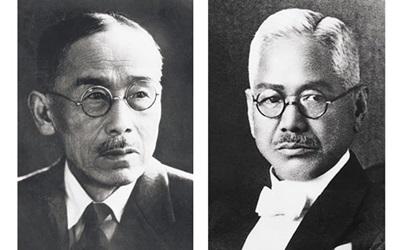
In Japan, calligraphy was a popular art form practiced by many people. Back then, people used brushes to write in Japan, so when fountain pens were introduced from the West, many people switched to these pens because they could replicate brush strokes without the stress of constantly dipping in ink. The Namiki company story started when Ryosuke Namiki, a professor in mechanical engineering, became fascinated with fountain pens. He realized that the pens had some imperfections, so he wanted to fix them. In 1918, he started the Namiki Manufacturing company along with his friend Masao Wada. Together, they launched pens both in Japan and overseas but later changed the company’s name to PILOT Pen Co. in 1938.
Namiki created his fountain pens with luxury in mind, so even the first collection of pens had gold nibs. Fountain pens are supposed to last a lifetime and remain in top-notch form, but back then, they were made using a material called ebonite, which changed color and degraded over time. Namiki Co. wanted to make a pen that lasted longer, so in 1924, the company began using lacquer for coating the pen to preserve it’s shine and allow it to retain an attractive body forever. The company paired lacquering with an art form called maki-e and released the first set of maki-e pens in 1925. The two founders traveled to Europe to promote their pens, where they received large orders to make more pens and create outlets in several countries.
THE NAMIKI MAKI-E ARTFORM
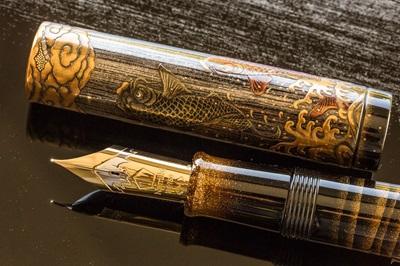
At the heart of Namiki's allure lies the extraordinary Maki-e technique—a true testament to the brand's commitment to transforming pens into living masterpieces. The word translates to "sprinkled picture," and it is a centuries-old Japanese art form that involves applying multiple layers of lacquer, sprinklings of metallic powders (usually gold), and drawing tiny intricate hand-painted designs. When the process is finished, each pen turns into an exquisite work of art capturing the essence of Japanese aesthetic philosophy.
The art of Maki-e is a labor-intensive process that involves repeating lacquering, drawing, sprinkling, and polishing over and over again. Skilled artisans dedicate countless hours to ensure precision and perfection in every detail. A single Namiki pen can take up to three months to create, but every step is important to get a high-quality pen. The layers of lacquer build a rich foundation, and the sprinklings of metallic powders, often gold or silver, add a three-dimensional depth.
The true magic unfolds during the hand-painting phase, where artists use tiny brushes to paint traditional Japanese motifs like cherry blossoms, koi fish, cats, and dragons. There are different types of Maki-e techniques: Rankaku (Egg Shell) Maki-e, where tiny pieces of quail eggs are used with lacquering to create motifs; Hira Maki-e, where the design is covered with gold/silver powder and burnished; Togidashi Maki-e (Burnished Maki-e), where hira maki-e is used to create the design which is revealed by burnishing lacquer with charcoal, and Shishiai Togidashi Maki-e (Combined Raised and Burnished Maki-e) which is the highest level of maki-e where the motif is raised using lacquer and charcoal
Owning a Namiki Maki-e pen is like that took months to create. It’s not just the evolution of writing instruments but the continuation of an ancient art form that transcends time.
WHY ARE NAMIKI PENS SO EXPENSIVE?
UNIQUE CRAFTSMANSHIP
At the heart of every Namiki pen lies unparalleled craftsmanship. Skilled artisans handcraft each pen using Maki-e, which takes months to complete. The production time and complicated process contribute to the elevated price point.
HIGH-QUALITY MATERIALS
Namiki spares no expense when it comes to the materials used in their pens. The nibs are made using 14k to 21k gold, and the bodies have gold and silver accents used during the maki-e process. This commitment to using only the finest materials ensures not only durability but also visual aesthetics, which elevates the overall writing experience.
LIMITED EDITIONS
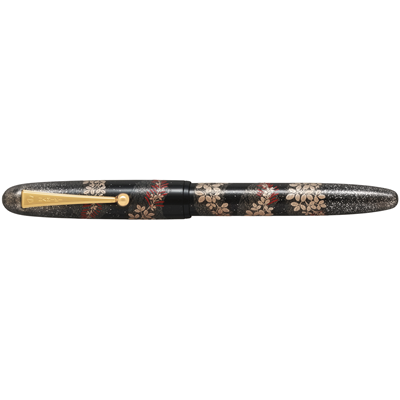
A defining characteristic of Namiki pens is their limited-edition releases. These pens are collectors' items because they are produced in small quantities. Because of the intensity of the Maki-e technique, every collection only has a few thousand pieces, with some having a few 100 pieces. For instance, the company also has a limited-edition collection with a single pen released yearly. The 2023 piece for this collection is called Bush Clover, and only 300 pieces were produced, with 69 pieces available in the US. The exclusivity of owning a pen from a limited series adds a layer of rarity and prestige, justifying the higher price point for collectors.
AWARD-WINNING
Namiki Fountain Pens has won several awards because of its high quality. For three consecutive years, 2011, 2012, and 2013, Namiki Maki-e pens won the PEN WORLD Reader's Choice Best Maki-e Pen Award in the USA. The company also won the 2014 Le Grand Trophée du Stylographe in France for their nib designs. When a company has been recognized by many international organizations for its excellence, its value increases, and so do its prices.
NIB QUALITY
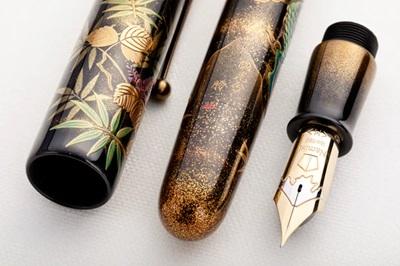
Most people who are familiar with Namiki pens say that one of their most attractive features is the nib sizes. The nibs are not made with gold only for the luxury appeal but also because it is a softer metal than steel, so ti glides smoothly onto paper. Gold nibs will also last a lot longer without rusting. Namiki pen nib sizes are also larger than regular fountain pen sizes. The emperor collection has the largest nib size out of all namiki pena with a #50 nib size. The Namiki yukari collection has the smallest with a #15 nib size.
THE MAKI-E ARTISTRY
One of the key reasons behind the high price of Namiki pens is the intricate maki-e artistry that adorns many of their models. Maki-e involves skilled artists applying layers of lacquer and metallic powders to create breathtaking designs. There are only a few artists that have the patience to pull off these designs and they charge a hefty sum for their services.
So, why are Namiki pens so expensive? The answer is that they are worth every penny. The meticulous artisanship, use of premium materials, limited editions, cutting-edge nib technology, and cultural significance woven into each pen make it a masterpiece. Owning a Namiki pen is not just acquiring a writing instrument; it's embracing a legacy—a legacy that comes at a premium, but for many, the price is justified.
Have you been looking to buy some high-quality Japanese stationery? You can check out our ZenPop stationery store for the best deals from Japan.
This article was originally written by our freelance writer Umm-Kulthum Abdulkareem and edited by us.
